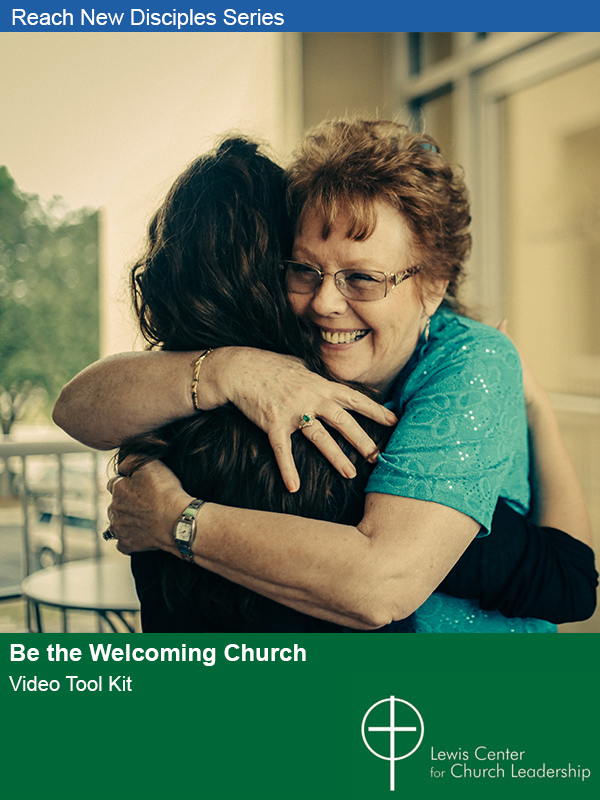Rebekah Simon-Peter says small churches cannot succeed by emulating the megachurch model of programming for every stage of life. She believes that five P’s — people, prayer, provision, partnership, and presence — are key to the sustainability of smaller churches.
To celebrate the Lewis Center’s anniversary, we are highlighting Leading Articles — some of our most popular posts of the past 20 years. We are pleased to share again this article by Rebekah Simon-Peter, originally published on January 18, 2022.
Small churches are the heartbeat of their communities and neighborhoods. The oft-preferred site of weddings and funerals, they offer spiritual community and support to people in transition. They are extremely important institutions in small towns — as essential as the gas station, grocery store, bank, hospital, and post office. But small churches have an inherent problem. They are small. The question is, how do you know when your small church is sustainable or if it’s time to call it quits?
The pandemic has been particularly challenging for small churches because the needs they fill have been in greater demand than ever, even as resources have been similarly pinched. In many cases, small churches have become even smaller. Have they reached the tipping point where it’s too late to be sustainable?
The most dangerous myth for small church sustainability
One myth, if you fall prey to it, can be the deal breaker for congregational sustainability. This is the myth that, to be sustainable, small churches have to be all things to all people. This idea is based on the megachurch model that one congregation can provide programming for every life stage while addressing every physical, social, and spiritual need. This myth is not only wrong it is dangerously wrong.
When small churches emulate the megachurch model, they set themselves up for failure. It’s almost physically impossible for small churches to meet every need of each life stage. Especially if their back-to-church numbers are smaller than their pre-pandemic numbers. The key to small church sustainability is to make sure you have the 5 P’s of sustainability in place and then to choose a few things to do well.
Small churches fight to stay alive.
Ever since the industrial revolution of the 1800s, not to mention the Walmart revolution that put mom and pop stores out of business in the 1990s, small communities have been economically challenged, making it harder than ever for small churches to survive and thrive. I’ve been studying this phenomenon for the last 25 years. While small towns are now making a comeback, churches have to be careful about how they position themselves to best serve their communities. In my work with Creating a Culture of Renewal® participants, I have worked with pastors of churches as small as six, and as large as 600. Most of our congregations tend toward the smaller in size. Through our work with church leaders, I have compiled the 5 P’s of small church sustainability.
1. People
The most important feature of a small congregation is its people. There are three factors to consider when evaluating how many people make for a sustainable congregation. First, churches with fewer than 20 committed members or participants will have a hard time staying afloat or being in ministry to others. Second, congregations need at least three generations —not counting the pastor and the parsonage family — to be sustainable. Third, consider the culture of the people. Are people closed off or caring?
2. Prayer
After people, the second most important factor is prayer. Without a spiritual foundation, your church is not sustainable, no matter the size or the budget. In addition to having a prayer chain, do you begin meetings with prayer, pray for guidance during decision-making time, and then follow the guidance? Prayer is the key to cooperation with God, as well as to sorting through the many choices that are before you. Your congregation must be firmly grounded in prayer to succeed.
4. Provision
Sustainable small churches support themselves financially, often through a combination of tithing, memorial gifts, endowments, special funds, and fundraisers. Beware a few pitfalls. First, big givers should contribute no more than 25% of the congregation’s budget for long-term sustainability. Your large givers will eventually move or die. Second, endowments should not fund more than 25% of the church budget. Endowments relieve the urgency for attendees to become givers or to give sacrificially. Third, don’t rely on in-person giving only; this dynamic undermines sustainability. Instead encourage people to set up automatic withdrawals to the church or other forms of online giving.
4. Partnership
Churches with people, prayer, and provision need to form community partnerships to ensure sustainability. As you transition out of the pandemic, create ways for your building to become multiuse. Some common ways are to rent space to a preschool, a local nonprofit, and/or one or more 12-step groups. But first don’t forget to clean out the closets, reconfigure storage space, and let go of items that have fallen out of use. This will create more space for your partners.
5. Presence
Now that you have people, prayer, provision, and partnership, it’s time to amplify your community presence. Establish and keep up a Facebook page as well as a website. But if the website can’t be maintained, better not to have it. Don’t forget small town newspapers, radio stations, and grocery store bulletin boards. The more you show up in the community, the more people will know where to turn when they need you.
Is your small church sustainable?
Now that you’ve evaluated your congregation on the 5 P’s of Small Church Sustainability, take heart. No matter your score, cultivating sustainability is an ongoing process.
This article was Originally posted on rebekahsimonpeter.com. Used by permission.
Related Resources
- 4 Approaches to Keeping Small Church Worship and Education Vibrant During the Pandemic by Rebekah Simon-Peter
- 3 Unique Gifts of the Rural Church by Allen Stanton
- Small Church Big Impact by Blake Bradford







